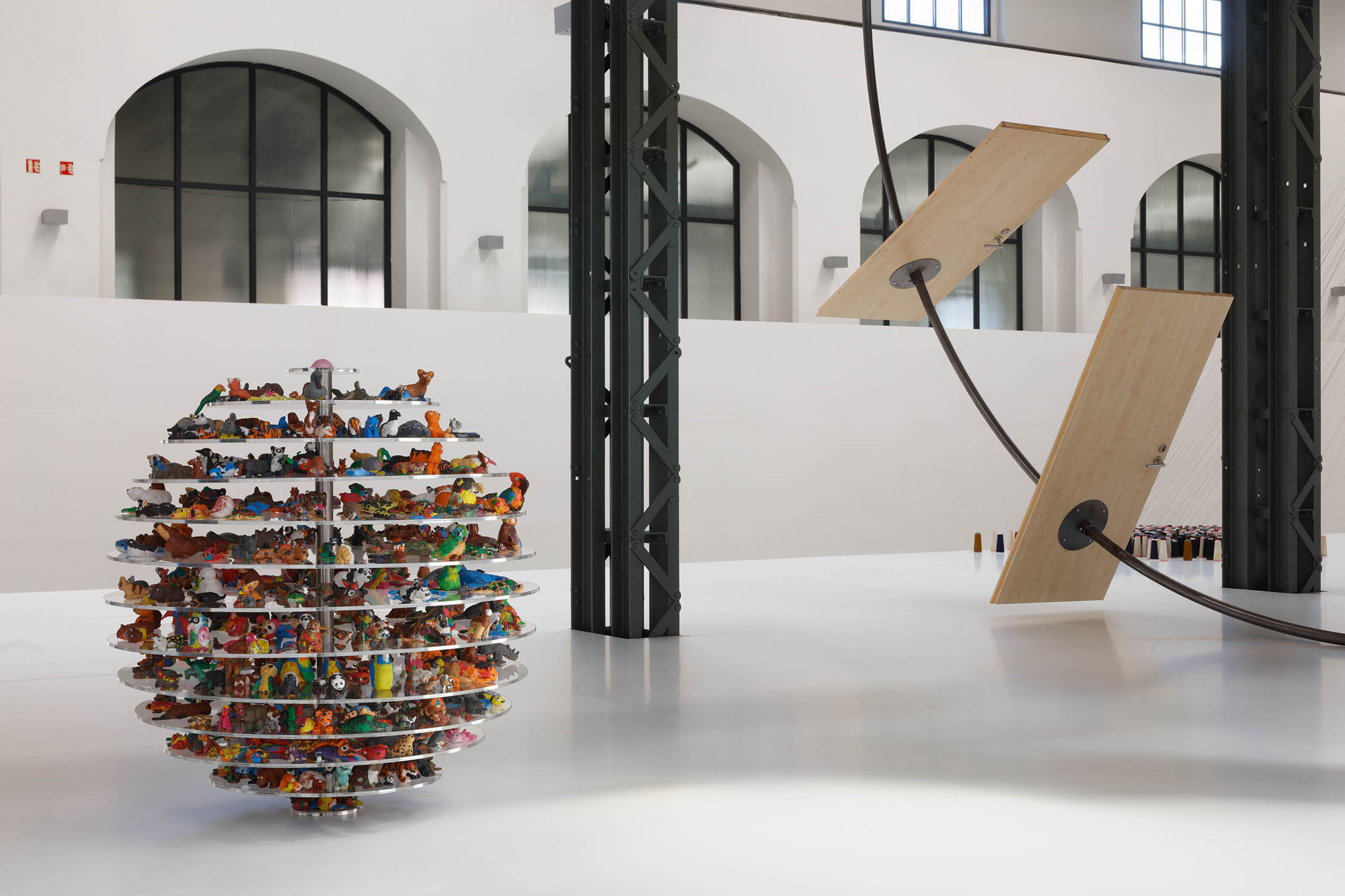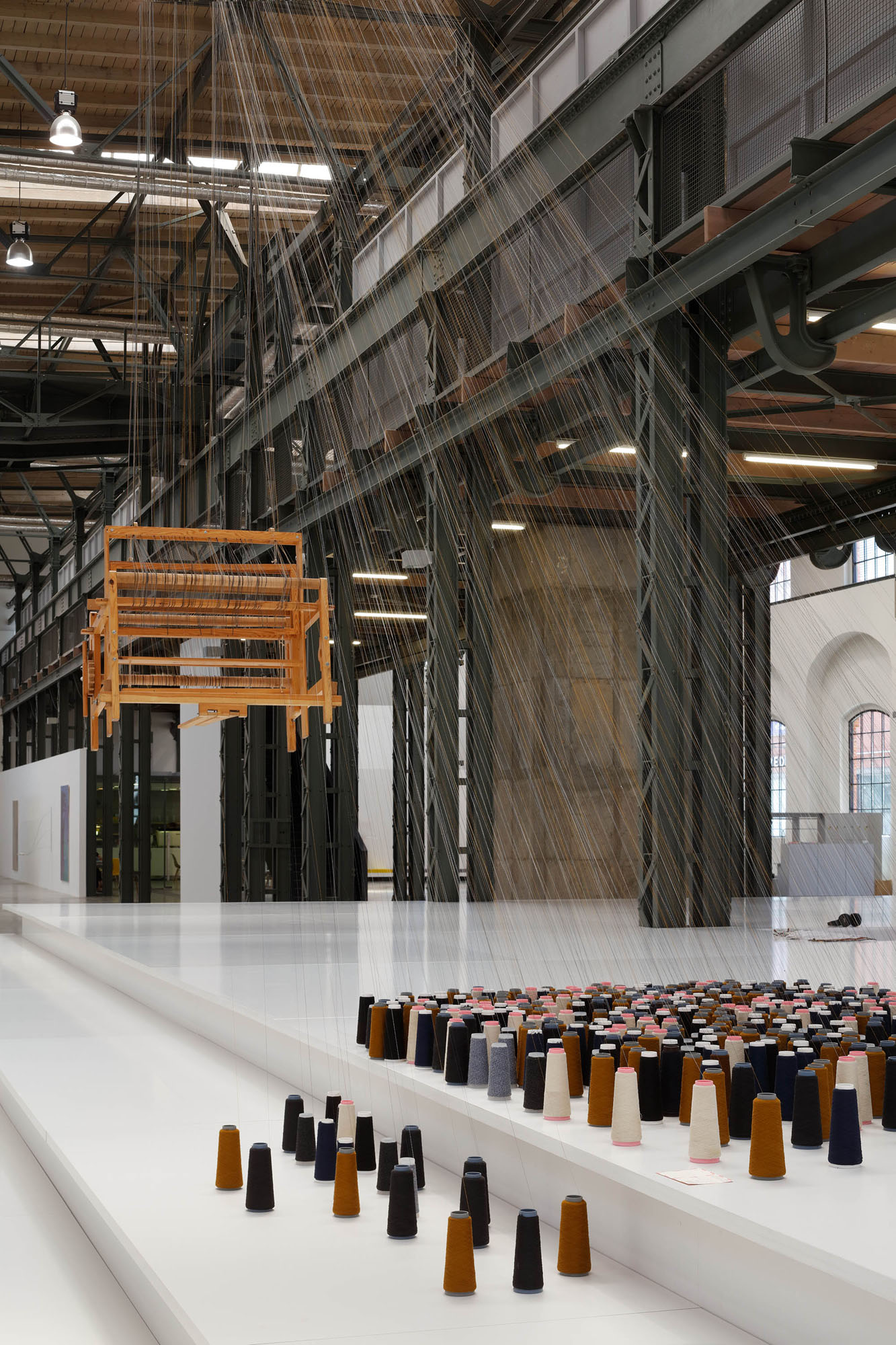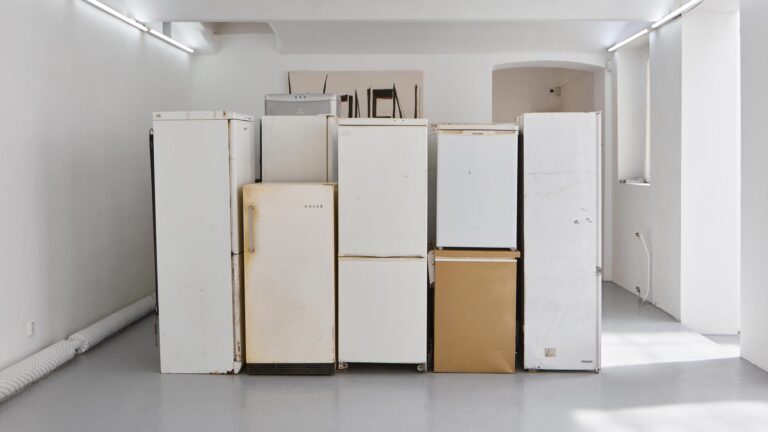Artists: Pavla Sceranková, Dušan Zahoranský
Exhibition title: Work on the Future
Curated by: Václav Janoščík
Architect: David Fesl
Venue: Fait Gallery, Brno, The Czech Republic
Date: June 5 – August 17, 2019
Photography: all images copyright and courtesy of the artists and Fait Gallery, Brno
As if the main contradiction of the present didn’t lie in the very problems we are currently facing, from climate change to the revival of populism and misinterpretation. Perhaps the most serious pitfall of today is our inability to share these problems and fears, as well as values, visions and solutions.
There is a name for our involvement with the world, its building and suffering — it’s simply work. We don’t necessarily have to understand it as an occupation but as a process in which our activities and ideas are given sense and co-shape the world in which we live.
By extension, art is not just the production of exhibitions and artworks; it enters our shared imagination, enriching it with images, visions and criticism. At our exhibition for the Fait Gallery we are trying to open up this process, to invite the viewer closer, to the podium which dominates the gallery space and provides the installations with a joint framework and context.
The platform is modified for art, as well as for work and leisure in the form of a co-working space and two in-built lounges supplemented with chairs from Pavla Sceranková’s previous art projects. The podium-table thus assigns the meaning to the individual installations while at the same time it also invites the audience to enter the process, the cycle of work and leisure giving sense to both works of art and our world.
Pavla Sceranková shows the human situation ruled by the current work culture. In a series of plasticine figurines created by the pupils from an art school (the work is called Klára) she lets us observe the dissolving of shapes and the blending and merging of matter. The number of endangered species becomes a metaphor for the current environmental issues, as well
as for joint and applied work which is inevitably multiplied, affected by social expectations, and still can be shared and useful and mediate values, including aesthetic ones.
Milada, again named after a person devising the particular project and working on it, combines an elastic suit with performance. It invites you to a flexible, enchanting but subjugating part-time life which enfolds you like tight-fitting underwear. In contrast, Miloš, a figure rooted in the gallery podium, seeks a base and anchoring, perhaps even the return to reflections on nature and the corresponding rhythm, harmony and deceleration.
Our presence, be it social time or personal experience, seems to develop in loops intersecting the show, as demonstrated by the Ilja installation. It is not just a suspended loom, the return of working techniques to the space of a former factory, the picking up of the threads of work which was interrupted. It also manifests the cyclic nature of work as such, the circle of knitting and undoing, work and leisure, creation and destruction.
Dušan Zahoranský incorporates in his work the subject of communication. In a series of fake phone calls written on dummy cell phones (Mária), he comments on the overwhelming presence of (online) communication today, as well as on the isolated, private, almost absurd dimension of the possibility of instant communication.
The monumental ring (Libor) encircling the gallery ramp brings to the space office furniture and the issues of the stereotypization and commodification of work, or semiocapitalism. Our work environment and application are often subordinated to phenomena such as open space, home office, flexitime, as well as the necessity to be constantly available on email, mobile phone and social networks. In this way, capitalism does not only appropriate our time and work but also the creation of meaning and sense.
In addition, Zahoranský views critically the idea of a universal, non-specific or fully transparent language. In a series of coloured grids of digital characters, Mirek and Kateřina, he stages a combination of type, communication and digital culture, while in the central installation entitled Dušan he symbolically “stole” the letters “o” from his own email communication.
The artist works in similar fashion with the sharing of films on the popular server uloz.to (Artur series). He cut one minute from each film and uploaded the files again; not only to alter the films circulating among the server users, but also to work further with the “stolen” time. This time appears to represent the negative of work time and circulation, the possibility of hiding (as an artist) and working outside the affective loops of digital communication and the capitalist order.
































